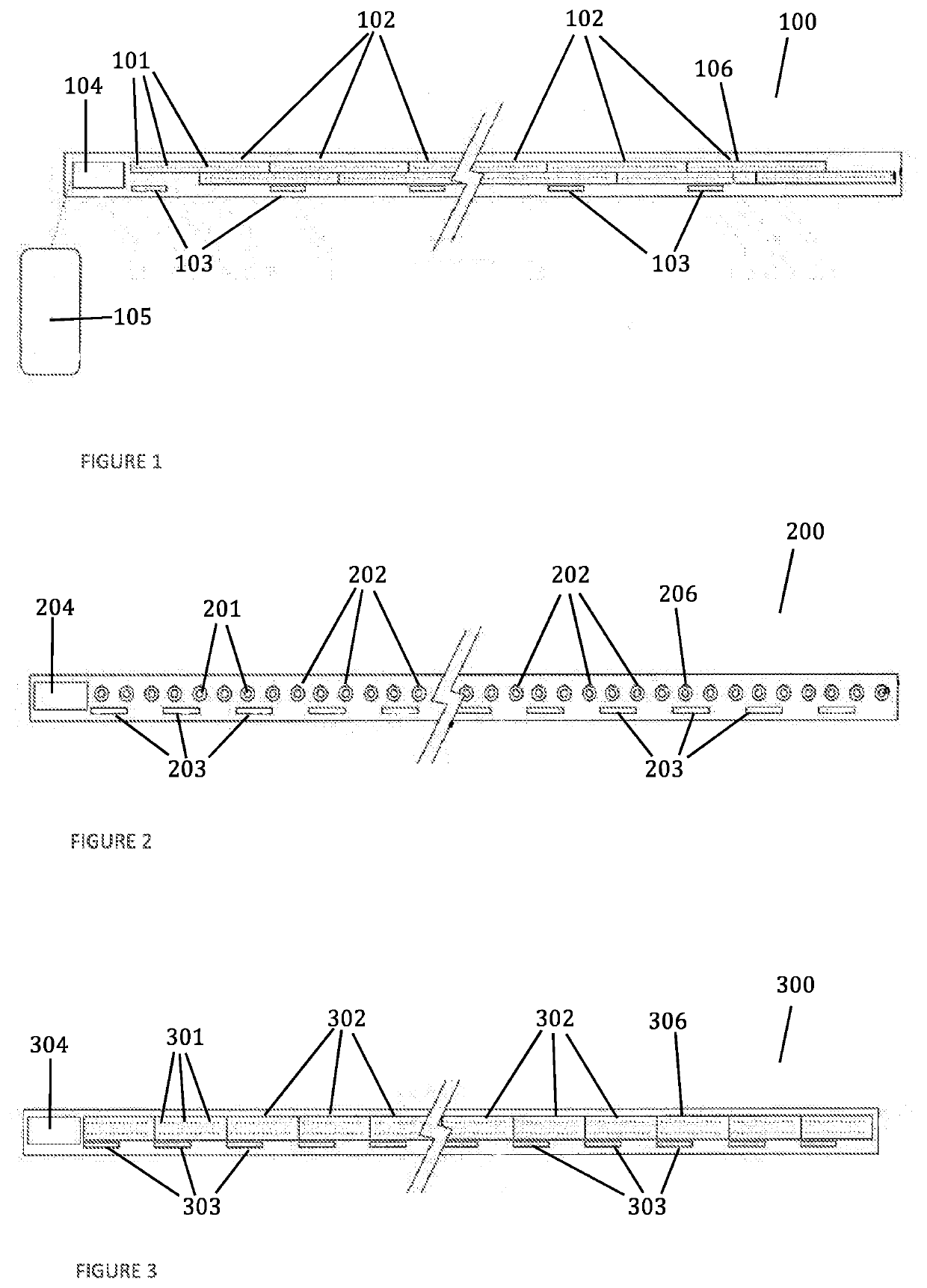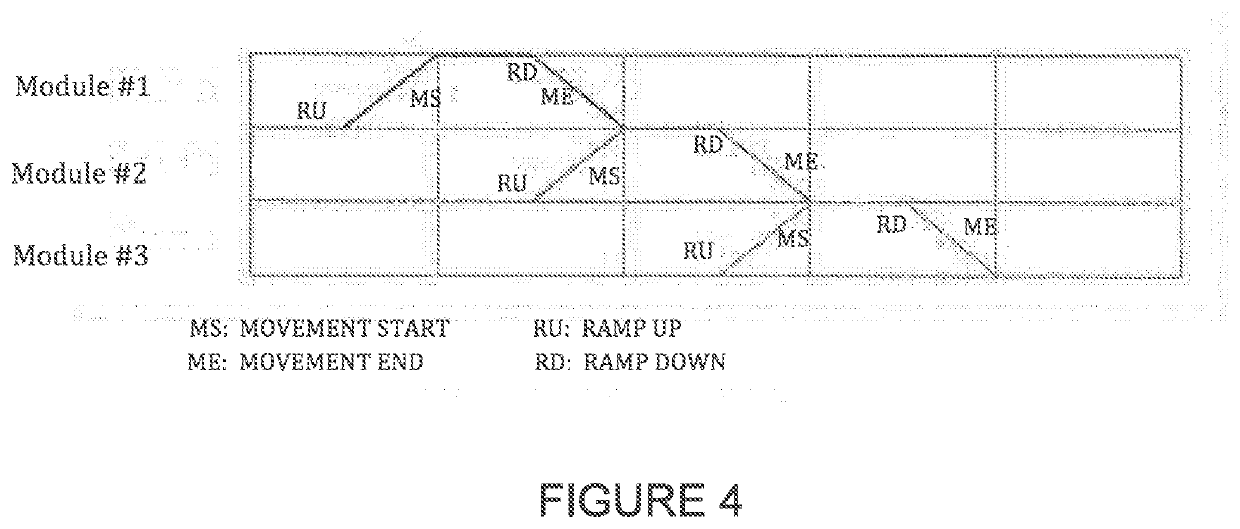Device, Method, and System for Creating Dynamic Horizon Effect Lighting
a dynamic horizon and lighting technology, applied in the direction of electrical appliances, etc., can solve the problems of affecting sleep, releasing heat and light, glow of light, etc., and achieve the effects of low electricity demand, low heat emission, and extensive li
- Summary
- Abstract
- Description
- Claims
- Application Information
AI Technical Summary
Benefits of technology
Problems solved by technology
Method used
Image
Examples
Embodiment Construction
[0056]Reference will now be made in detail to exemplary aspects of the present invention which are illustrated in the accompanying drawings. Wherever possible, the same reference numbers will be used throughout the drawings to refer to the same or like parts.
[0057]FIGS. 1-3 provides separate embodiments of the device of this invention comprising a length of the system 100, 200, 300. The given length of the system as presented in FIGS. 1-3 containing one or more lighting elements. Said one or more lighting elements 101, 201, 301 contained and organized within a modular unit (also referred herein alternatively as a modular subsection) 102, 202, 302. Each modular unit 102, 202, 302 is in direct communication with a power supply 103, 203, 304. Each modular unit 102, 202, 302 is also in direct communication with a controller 104, 204, 304. Each said controller 104, 204, 304 is in direct communication with a control program 105 which directs operation of the system according to a computer...
PUM
 Login to View More
Login to View More Abstract
Description
Claims
Application Information
 Login to View More
Login to View More - R&D
- Intellectual Property
- Life Sciences
- Materials
- Tech Scout
- Unparalleled Data Quality
- Higher Quality Content
- 60% Fewer Hallucinations
Browse by: Latest US Patents, China's latest patents, Technical Efficacy Thesaurus, Application Domain, Technology Topic, Popular Technical Reports.
© 2025 PatSnap. All rights reserved.Legal|Privacy policy|Modern Slavery Act Transparency Statement|Sitemap|About US| Contact US: help@patsnap.com


